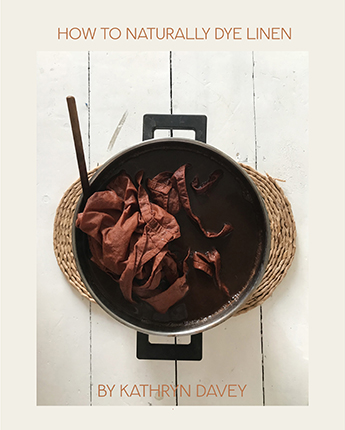

ENHANCE YOUR SEWING JOURNEY BY LEARNING TO DYE NATURALLY WITH KATHRYN DAVEY
Leave Your Email Below for Your Instant Download to Begin
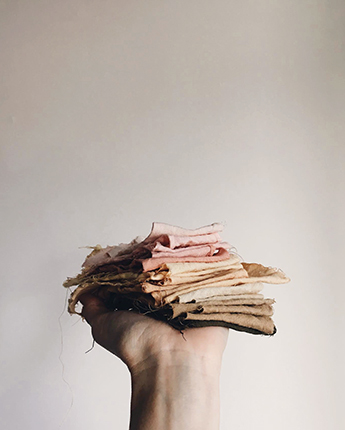

Thank you!
Click on this Link to Download Your PDF.
We've also sent you an email with this link for safekeeping.
Happy Dyeing!
Resources
There are currently 68 Glossary in this directory
All-In-One Facing
An all-in-one facing (also known as a combined neck and armhole facing) is a clean and simple finish for a sleeveless garment. It creates a neat and supportive finish at the neckline and the armhole edges.
Backstitch
Backstitch is a short reversal in the direction of stitching used at the beginning and end of each line of stitching to keep the threads from unraveling.
Bar Tack
Bar tacks are a small row of high-density stitches found on the edges of pockets or belt loops. These small stitches are often used in high-stress points like pocket openings, bottom of a fly or around buttonholes to reinforce the areas that are prone to tearing or coming apart over time.
Baste stitch
Baste stitch is very wide, loose stitch used to keep fabric in place until the permanent stitching is sewn. Baste stitching is often employed for trying on clothes for size adjustments and for keeping things like pockets in place while sewing more permanent stitches. Often the baste stitches are removed once the permanent stitches are in place.
Batting
Batting is a fluffy sheet of fibers usually made of cotton, wool, or polyester that goes inside things like quilts and jackets to add warmth and thickness. There is a wide variety of thicknesses (called “loft”) fibers, and dimensions.
Belt Loops
Belt loops, sometimes called belt carriers are a construction detail that helps you keep a detachable belt for pants or a dress in place.
Bias
The bias in fabric simply means diagonal to the direction of the threads. To cut on the bias means to orient the pattern piece so you cut at a 45 degree angle to the edge of the fabric. Bias cut fabric is characteristic for having more stretch and drape than fabric cut on the grainline or crossgrain
Bias Tape
Bias tape is something that is often used in sewing for binding necklines and armholes or finishing raw edges. As its name suggests, bias tape is a long strip of fabric that’s been cut on the bias of fabric (diagonally across the grain of the fabric). Because it is cut on the bias, it’s stretchier and more flexible, which makes it really easy to sew around curves and irregularly shaped edges. Plus, it allows to enclose all raw edges for a neat and clean finish.
Bobbin
The bobbin contains the thread that is switched on the underside while sewing. Different machines use different types of bobbins. If the machine starts sewing roughly, on some machines you can simply clean the area around the bobbin and re-oil.
Box Pleats
Box pleats are made up of two knife pleats facing away from each other or, in other words, they are formed when two folds of fabric are folded away from each other giving a wide vertical pleat. They are often used as stand-alone pleats on the back of a shirt or as a series of pleats on skirts or dresses.
Clip corners
To make corners crisp once they are turned right side out, the seam allowance is carefully trimmed down close to the stitching by the corner.
Clip seam allowance
Along convex and concave curves, the seam allowance lays more flatly if it is clipped carefully to the line of stitching. On concave curves, cut a series of wedges out of the seam allowance. On convex curves, make a series of straight snips in the seam allowance.
Concealed Button Band
A concealed button band is a type of placket where the buttons are hidden by the top layer of the placket and are invisible when it’s buttoned up.
Continuous Bound Placket
A continuous bound placket is a placket made from one piece of fabric that is used to bind a slash opening in the sleeve.
Cut mirrored
Patterns will sometimes say things like, “cut two mirrored.” This means that if you are using fabric with an obvious right and wrong side, or fabric with a directional pattern, you have to be sure to cut the two pieces so they are exact opposites, mirrors, of each other. If your fabric doesn’t have a right or wrong side or a directional pattern, there is no need to cut mirrored.
Cut on fold
The term “cut on fold” or “place on fold” will often appear on pattern pieces along one edge. It means to place that edge of the pattern along the folded edge of the fabric. Paper patterns often only have half of the front and back bodices because you place them on the fold when you cut into the fabric. This is a way of reducing the time required for cutting out pattern pieces and squeezing more pattern pieces onto a smaller size paper.
Darts
Darts are one of the most basic structural elements in dressmaking and garment construction. They are folds of fabric used for shaping and removing excess volume for a better fit.
The female body is not a simple flat cylinder, it has all kinds of curves, dipping valleys and rising hills. In order to make a fitted garment, you need darts to sculpt your fabric around the contours of your body. In other words, darts transform a flat pattern into a three dimensional shape that hugs your curves in all the right places.
The female body is not a simple flat cylinder, it has all kinds of curves, dipping valleys and rising hills. In order to make a fitted garment, you need darts to sculpt your fabric around the contours of your body. In other words, darts transform a flat pattern into a three dimensional shape that hugs your curves in all the right places.
Directional print
Some fabrics have prints where every image on the fabric is oriented the same way. For example, if a floral print has all the flowers pointing one way, that is a directional print. If the flowers are facing every which way, it’s not a directional print. When using fabrics with directional prints, be sure to be mindful of what direction the pattern pieces are laying and cut mirrored pieces so the fabric images are oriented correctly on your garment.
Edgestitch
Edgestitch is a line of stitches close to the edge of a seam or fold. Edgestitching is often around 1/8” (~3 mm) or less from the edge. The stitch length of edgestitching is often increased slightly from normal stitches for aesthetics. Edgestitching can be used both as a style element and as seam reinforcement.
Elastic Waistband
Most commonly seen on skirts, pants and dresses, a garment with elasticized waist is easy to pull on, will stay in place all day and live with your body. Elastic waistbands also allow for small variations in fit and work great for most body types.
Feed dogs
The feed dogs on a sewing machine are what grip the fabric and move it forward under the needle as you sew. They are metal plates with little teeth-like ridges. They help keep the fabric moving in a straight line and at an even pace. Most machines have an option to disengage the feed dogs if you have a project where you would like to sew freehand.
Finish a seam
To finish a seam is to use a method of keeping the raw edges of the seam allowance from fraying. Common ways to finish a seam include serging and zigzag stitch.
Flat Felled Seam
A flat-felled seam is an easy and useful technique to master if you are looking for a sturdy seam finish and a neat, professional look. Just like with French seams, the raw edges are completely enclosed within the seam with the wrong side looking as good as the right side.
French Seam
French seams are a great way to finish raw edges and to give your garment a clean, professional appearance. In essence, the French seam completely encloses raw edges of the seam allowance within a stitched little pocket making your seams neat and more durable. They are perfectly suited for lightweight and medium weight linen that is prone to fraying. It’s better not to use this finish on heavy linen as it may create bulky seams.
Gathering Fabric
Gathering is the process of drawing fullness into a much smaller area to create soft, even folds. Just like with darts, tucks, pintucks, elastics, and pleats, gathering is a way of controlling fullness in a garment. It is most often used at waistline, yokes, sleeves, cuffs or when adding ruffles.
Godet
One way of adding fullness to a particular area of your garment, for example, a hemline on a skirt or a back of a dress or even the bottom of a sleeve, is by inserting panels of fabric which are commonly known as godets.
A godet is usually triangular in shape (but not necessarily).
A godet is usually triangular in shape (but not necessarily).
Grainline and Crossgrain
Patterns often indicate which way to lay the pattern piece on the fabric by showing an arrow that should be matched up with the grainline of the fabric. The grainline runs parallel to the selvage edge of the fabric. The crossgrain runs perpendicular to the salvage edge of the fabric. For example, if you have a piece of fabric 5 yards long and 45” wide, the grainline is 5 yards long, the crossgrain is 45”.
Handwheel
With the handwheel of a sewing machine you can manually move the needle and feed dogs to sew at a much slower, more deliberate speed. The handwheel is good to use when sewing across tricky things like metal zippers that may break the needle.
Hem
The bottom, sewn edge of a garment is the hem. Hems are often made by folding up the bottom edge twice and sewing the fold in place so the raw edge is enclosed.
Hemstitching
Hemstitching is an heirloom technique also known as “Drawn” or “Pulled” threadwork embroidery. This type of embroidery is achieved by gently pulling out individual threads along the grain line to create a small gap in the fabric. A combination of hand stitches is then used to create simple to elaborate designs within that gap.
Inseam Pocket
Inseam pockets are hidden in a seam of your garment and are entirely enclosed by the outer layers, leaving no visible edges, stitching lines etc. They are primarily, though not exclusively, used on dresses, skirts and some pants.
Interfacing
Interfacing is a material used to give fabric more structure and firmness. It’s often used in collars, waistbands, and button plackets. It comes in many varieties and thicknesses.
Invisible Zipper
An invisible zipper is a zipper that lies hidden in the seam with no machine stitching visible from the right side of the garment. So you don’t need to worry about perfect topstitching as all the action is happening behind the scenes. This is one of the primary reasons why invisible zippers are so popular and look so professional.
Knife Pleats
Knife pleats are folds of fabric that are pressed in one direction on the right side of the fabric. They may be used in small numbers as a style effect or for an entire part of a garment. They may be soft or pressed crisp, depending on the style required, and may be stitched down or hang free. They can also be spaced further apart or go in two directions.
Mandarin Collar
A Mandarin collar, standing collar, or choke collar is a short unfolded stand-up collar with Asian influence that is often used in shirt or dress making.
Mitered Corner
A mitered corner is a neat way of finishing the corner of a fabric edge in such a way that there is no bulk when the hem is turned under.
Notch
Patterns often have notches along the edges. They are used as a way to keep track of where different pattern pieces should align while pinning and sewing the fabric together. They can also be used to indicate various things like where to start or stop lines of stitching. Notches are often found along curvy armholes and the crotches of pants. To mark a notch on fabric, you can either make a small incision into what will be the seam allowance with the scissors, or you can use a fabric pen.
Notched Collar
A notched collar (or tailored collar) is mainly used on tailored jackets and coats. A notched collar is composed of an upper collar, an under collar and two lapels. It gets its name from a little notch that is formed between the collar and the lapel.
Partial Button Placket
The partial placket, also known as a button placket, is basically an opening in clothes that allows you to easily put and remove your clothes and is a great design feature. As its name suggests, the partial placket will only go down a short distance instead of the full length of the garment.
Patch Pocket
Patch pockets are shaped pieces of fabric that are finished on all sides and then attached on the right side of the garment.
Pintucks
Pintucks are a decorative element that can be added to your garments: tops, dresses, skirts etc. They are formed by folding and stitching the fabric on the right side (much like a pleat) and are typically created in a group and are parallel to each other. This succession of folds creates sublime volume and gives decorative effect.
Piping
Piping (sometimes referred to as cording or welting) is a strip of bias-cut fabric folded over a cord. It is found in all sorts of projects and is often applied to trim the seams of upholstery projects and tailored garments.
Pleats
Pleats are folds of fabric that are made to add volume, take in fullness and add interest to the silhouette of a garment. They can be used as decorative features on sleeves and blouses as well as in home decor. However, pleats are most commonly seen on skirts and dresses to take in a full skirt to fit at the waist.
There are different types of pleats, including box pleats, knife pleats, inverted pleats, accordion pleats and kick pleats, which are formed using different methods but sewn in the same manner.
There are different types of pleats, including box pleats, knife pleats, inverted pleats, accordion pleats and kick pleats, which are formed using different methods but sewn in the same manner.
Press
Press is a common synonym for iron in sewing. “Press seam open” means to iron both pieces of fabric of the seam allowance to their own side. “Press seam together toward the front” means to iron both pieces of fabric of the seam allowance toward the front of the garment.
Presser foot
The presser foot is the part of the sewing machine that lowers on to your fabric and keeps it pressed firmly against the machines’s feed dogs. In addition to keeping the fabric pressed against the feed dogs, the presser foot also helps the fabric stay in place for a clean entrance and exit of the needle.
Raw edge
Raw edges can either refer to the edges of fabric that are not the salvage edges, or they can refer to edges that have not been finished with serging or zigzag stitch.
Seam allowance
When sewing two or more pieces of fabric together, a seam allowance is the distance from the edge of the fabrics to the line of stitching. Common seam allowances are 3/8” (~1 cm), 1/2” (~1.3 cm), and 5/8” (~1.6 cm).
Seam rip
Seam ripping is cutting the threads of a seam so the seam can be taken apart without the fabric being damaged. A specific tool called a seam ripper is often used.
Self / Self fabric
Self fabric refers to the main fabric that will be used for a project — the fabric that will be visible from the outside. Sometimes patterns will say, “cut 2 in self fabric” for a pocket or facing. That means the pattern is asking you to cut the pocket or facing from the same fabric as the main outer pieces.
Selvage edge
The selvage edges of fabric run parallel to the grainline. The selvage edges of woven fabric are made by the weft (crossgrain threads) being woven back and forth across the warp (grainline threads). When the weft reaches one edge it turns around to be woven back across to the other edge. This creates durable edges that don’t fray.
Serge
Serging is a seam finishing technique done by a machine called a serger. A serger uses four spools of thread instead of a regular sewing machine’s two sources of thread. Serging is the most common way to finish seams. A common alternative to serging is using a zigzag stitch on a regular machine.
Shirring
Elastic shirring should not be confused with smocking, even though they look very similar. Smocking is created by hand using embroidery stitches and pleats to gather fabric and create some stretch. As for shirring, it is created by machine sewing parallel rows of straight stitching using elastic thread in the bobbin and regular all-purpose thread in the needle to evenly gather the fabric and produce some elasticity.
Shirt Collar
The shirt collar is the most traditional type of collar mostly found on shirts, dresses and jackets. It consists of the collar fall and the collar stand, which is a separate piece of fabric that raises the collar fall off the neckline.
Sleeve Placket
A sleeve placket is an opening at the end of a sleeve that allows your hand to fit through a narrow space easily. It’s most often seen on shirts or blouses and is generally finished with a cuff. Not only it is functional, it can also be used as a design detail.
Spaghetti Straps
Spaghetti straps (also referred to as rouleau straps) are those narrow fabric straps that you often see in lingerie, camisole tops and dresses. They look delicate and feminine, keep the shoulders bare but have a bad reputation for being difficult to sew.
Staystitch
Staystitch is a straight line of stitching within the seam allowance that helps keep vulnerable parts of fabric from fraying or stretching while the pattern is being sewn together. Staystitching is often sewn by the armhole in shirts or along the top edge of pants.
Stitch in the ditch
Stitch in the ditch is a line of stitching directly over an existing seam on the right side of the fabric. This technique is used to hide stitches and is useful on collars, waistbands, and fastening down facings.
Stitch width
Stitch width refers to the distance the fabric travels on the sewing machine between each time the needle enters the fabric. The longer the distance, the wider each individual stitch will be. Very wide stitches are looser and easier to take out later. Baste stitching uses wide stitches. Narrow stitches are tight and can be difficult to take out but are strong. Bartacks use very narrow stitch width.
Topstitch
Topstitch is a line of stitches that is visible on the right side of the garment. Generally it is preferred to sew topstitching with the right side of the fabric facing up so the needle impressions are expressed toward the wrong side. Stitch length of topstitching is often slightly increased for aesthetics. Top stitching can be used both as a style element (eg. the decorative stitching on back jean pockets) and as seam reinforcement.
Trim/grade seam allowance
Trimming and grading a seam allowance means to cut off some of the width of the seam allowance after stitching. Depending on the type of seam, a common seam allowance after trimming is 1/4” (6 mm).
Understitch
Understitch is a line of stitching near a seam that fastens the seam allowance to the lining or facing. It is used to help prevent linings and facings from showing on the right side of the garment and to make seams look crisp. Often used in curved areas like necklines and armholes.
Vent
A vent (sometimes called a split) is a part of functional design that allows for the ease of movement (walking or sitting) within a garment.
All vents are positioned in the seams and are most commonly seen at the back of classic style skirts, coats and tailored jackets. Often, these slits are secured at the top (also called the release point) with decorative reinforcement stitching to prevent the fabric from tearing up with time.
All vents are positioned in the seams and are most commonly seen at the back of classic style skirts, coats and tailored jackets. Often, these slits are secured at the top (also called the release point) with decorative reinforcement stitching to prevent the fabric from tearing up with time.
Warp and weft
In woven fabrics, the warp refers to the threads of the fabric that are lengthwise and run along the whole length the the yardage. This is the grainline direction. The weft is the thread that is woven back and forth, under and over the threads of the warp. This is the crossgrain direction.
Welt Pocket
In a welt pocket, the actual pocket is on the inside of the garment, with a strip of fabric on the outside of your garment used to cover the pocket opening.
Yoke
A yoke is the upper part of a garment that fits the shoulder area. It consists of two separate pieces of fabric (an inside and an outside yoke) that are attached to the front and the back of the garment. Since all the raw edges are concealed within the two yoke pieces, you get a clean finish and a garment that looks nice inside and out.
Zigzag stitch
Zigzag stitch is a common way of sewing with knit fabrics and finishing seam edges. The sewing machine needle moves to the right or to the left in between each stitch creating a zigzag pattern with the thread. This stitch works well for knit fabrics because it is able to stretch when the fabric is stretched.
SEW THIS LOOK
Latest Posts
Search engine
Use this form to find things you need




























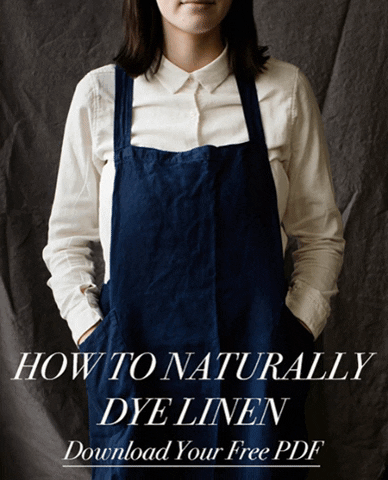
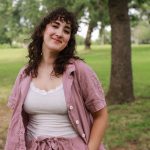

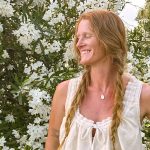

LATEST COMMENTS
10 Sep 2020 @ 1:00 am by How to Blend Heavy Linen Fabric with Other Materials in Home Decor
23 Jan 2020 @ 3:25 am by 15 Iconic '50s Fashion Trends That Changed Style Forever
05 Jun 2018 @ 6:58 am by Exploring Different Types of Pleated Skirts and How to Wear
22 May 2018 @ 4:07 am by Exploring Different Types of Pleated Skirts and How to Wear
20 May 2009 @ 12:10 am by When Should You Wear Linen Cotton Fabric for Maximum Comfort